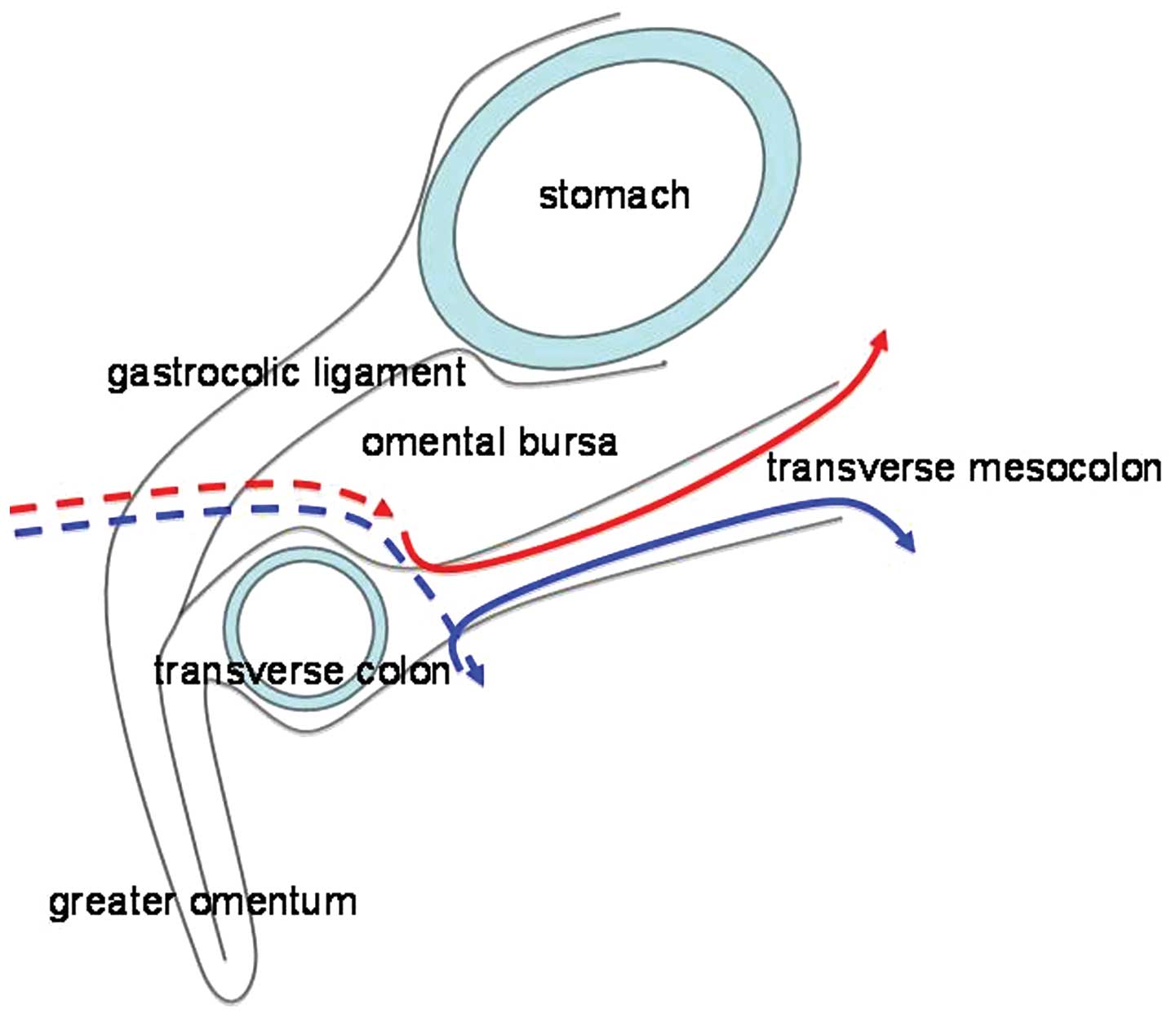Clinical outcome of transperitoneal ureterocutaneostomy using the transverse mesocolon
- Authors:
- Published online on: May 9, 2013 https://doi.org/10.3892/mco.2013.117
- Pages: 721-725
Metrics: Total
Views: 0 (Spandidos Publications: | PMC Statistics: )
Total PDF Downloads: 0 (Spandidos Publications: | PMC Statistics: )
Abstract
The aim of the present study was to demonstrate that the treatment outcome of transperitoneal ureterocutaneostomy using the transverse mesocolon is not inferior to that of conventional retroperitoneal ureterocutaneostomy. The enrolled subjects were 26 patients who underwent ureterocutaneostomy among a total of 160 cases of urinary diversion performed at our institution between March, 2004 and November, 2011. A total of 11 cases and 18 ureters were treated by transperitoneal ureterocutaneostomy via the transverse mesocolon, with 7 bilateral ureterocutaneostomy cases. All the cases of retroperitoneal ureterocutaneostomy were unilateral, totaling 15 patients and 15 ureters. Postoperative adverse events (ileus, acute pyelonephritis), catheter-free status and renal function [blood urea nitrogen (BUN) and serum creatinine (Cr) values] were retrospectively evaluated between the groups treated by the different surgical procedures. Ileus was only observed in 1 case and improvement was achieved through conservative therapy alone (p=0.827). Acute pyelonephritis developed in 3 (27.3%) transperitoneal and 8 (53.3%) retroperitoneal cases, with all the cases recovering following treatment with antibiotics alone (p=0.199). A catheter‑free status was achieved in 3 cases (27.3%) and 4 ureters (22.2%) in the transperitoneal group and in 2 cases and 2 ureters (13.3%) in the retroperitoneal group (p=0.393). There was no significant change in renal function (BUN and serum Cr values) in the transperitoneal ureterocutaneostomy cases at the postoperative, early postoperative (1 month following surgery) or the final follow-up examination (p=0.739 and 0.078). In conclusion, transperitoneal ureterocutaneostomy allows for the construction of a cutaneous stoma using a shorter ureter, with a treatment outcome that is comparable to that of retroperitoneal ureterocutaneostomy.










